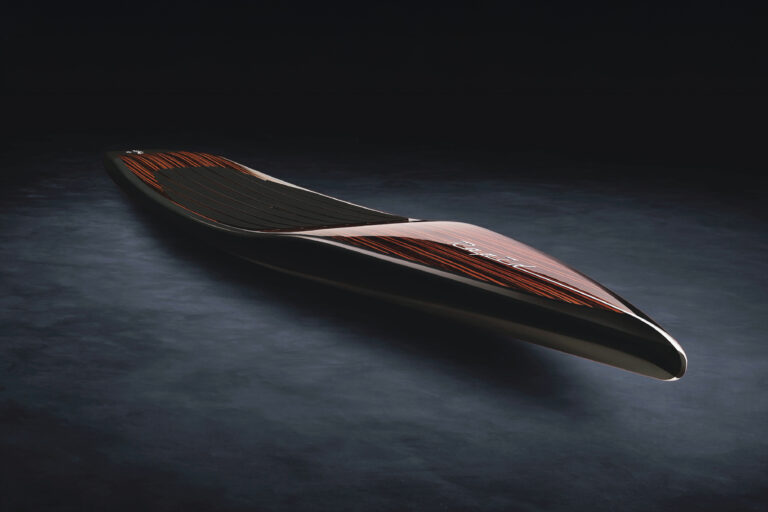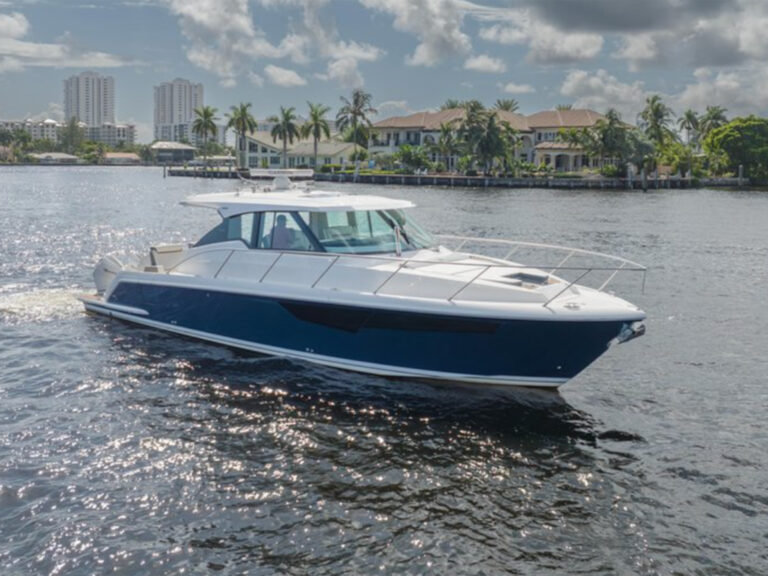
Liveaboard life can be ideal, so long as zoom works. Mark and Julie Altman learned this lesson earlier this year while anchored aboard Unruly Julie, their 22-year-old Caliber 40 LRC, near Panama City Beach, Florida.
He was on a conference call with multiple people, while she was screen-sharing with a California-based colleague. They simultaneously ran their communications through their Digital Yacht 4GXtream, which uses cellular networks to deliver onboard internet. Paired with a $20-per-month AT&T SIM card, it gives them unlimited data and unthrottled speeds.
“It just works,” Mark Altman says of their kit, which includes an AIS transmitter and an antenna splitter. “We’ve made a few other mistakes, but Digital Yacht is one that we got right.”
Nick Heyes, an electrical engineer and marine-industry veteran, founded Digital Yacht in 2011 in Somerset, England. He caught what he terms a lucky break. The automatic identification system was just reaching recreational yachts, Apple’s iPad was brand-new, and Digital Yacht’s first product—the iAIS wireless AIS receiver—fused the two with perfect market timing. The flooding AIS tide allowed his company to innovate across a range of technologies and become an international exporter.
The business—built alongside chief technology officer Paul Sumpner, director of business development and marketing Nicolas Guerin, and head of hardware engineering Akos Keleman—quickly expanded its product portfolio. Marinized black-box PCs were first, followed by data gateways, navigation software, sensors, long-range cellular and Wi-Fi connectivity solutions, TV antennas, and recently, vessel-monitoring systems that use artificial intelligence.
Digital Yacht’s products have always been open-source and certified by the National Marine Electronics Association, which lets them play nicely with third-party apps, software and hardware. In some cases, the company’s alerts and devices can be displayed on, and controlled by, third-party multifunction displays.
While Digital Yacht sells a high-definition display, Heyes has long believed that consumer-grade tablets and smartphones can be wirelessly networked via data gateways with older onboard systems to create information-rich environments for a fraction of the cost of an electronics refit.
“People walk around with $1,000 computers in their pockets that have way more processing power, speed and [screen] quality than any marine product,” Heyes says. “We can convert old and legacy data to a format that people want. … I fundamentally believe the customer is the key driver of what we need to do.”
Digital Yacht often innovates based on conversations with customers. An example is the second SIM-card port the company added to the 4GXtream. “We have a ‘make, don’t debate’ approach,” Heyes says. “If we see an idea and we think it could be successful, we bring [it] to market with 80 percent of the features. We can add features later, but we’ve got to have confidence in its reliability.”
This is where Digital Yacht’s relatively small size is advantageous. It can develop a product in less than a year, Heyes says, using a range of microprocessor libraries, an NMEA 2000 stack and a 4G interface. It’s all “a bit like Lego,” he says, with additions being made to existing products, creating new applications.
It also helps to understand boats. Heyes is a lifelong sailor, Sumpner lives on an all-electric canal boat, and Digital Yacht maintains a dedicated test boat called Gigabyte. (Heyes jokes that the next ride will be called Terabyte.)
“Globally, we have 35 people, and we do $10 million a year in revenue,” he says. The company exports to 70 countries. “We’re small, but not tiny,” he says.
While Digital Yacht’s head count is a market differentiator, so too is its production strategy. The company manufactures 90 percent of its product in the UK and 10 percent in France. It’s considering expanding manufacturing to the United States. “Shipping and freight are super-expensive,” he says.
Looking ahead, Heyes envisions ever-evolving user interfaces and increased use of artificial intelligence. This past November, the company unveiled NavAlert, a monitoring system that uses artificial intelligence to scrutinize any parameter on a yacht’s N2K network, allowing for smart anchor-drift alarms and AIS-based collision alarms. Should a default or customer-dictated threshold trip, the system records the data and triggers onboard audio and visual alarms. Users can pair a NavAlert with a 4GXtream cellular modem, allowing NavAlert to transmit notifications autonomously.
NavChat is expected to arrive this year, converting NavAlert’s ones and zeros into nouns and verbs. NavChat “takes the NavAlert alarm and turns it into a spoken alarm,” Heyes says. It should allow boaters to set alarm parameters using a single MFD.
These days, whether it’s AIS or AI, Digital Yacht makes a product for almost every type of yacht, so long as it involves data and DC power. After all, you just might find yourself at anchor, collaborating with co-workers while your first mate screen-shares with a colleague a continent away—all for a fraction of the airtime cost of an at-home connection. The upshot is that liveaboard life can be ideal.
Royal Approval
In 2011, Digital Yacht collected a DAME Design Award for its iAIS wireless AIS system. This year, it earned a Queen’s Award for Enterprise, the most prestigious award the monarchy bestows upon British businesses.









